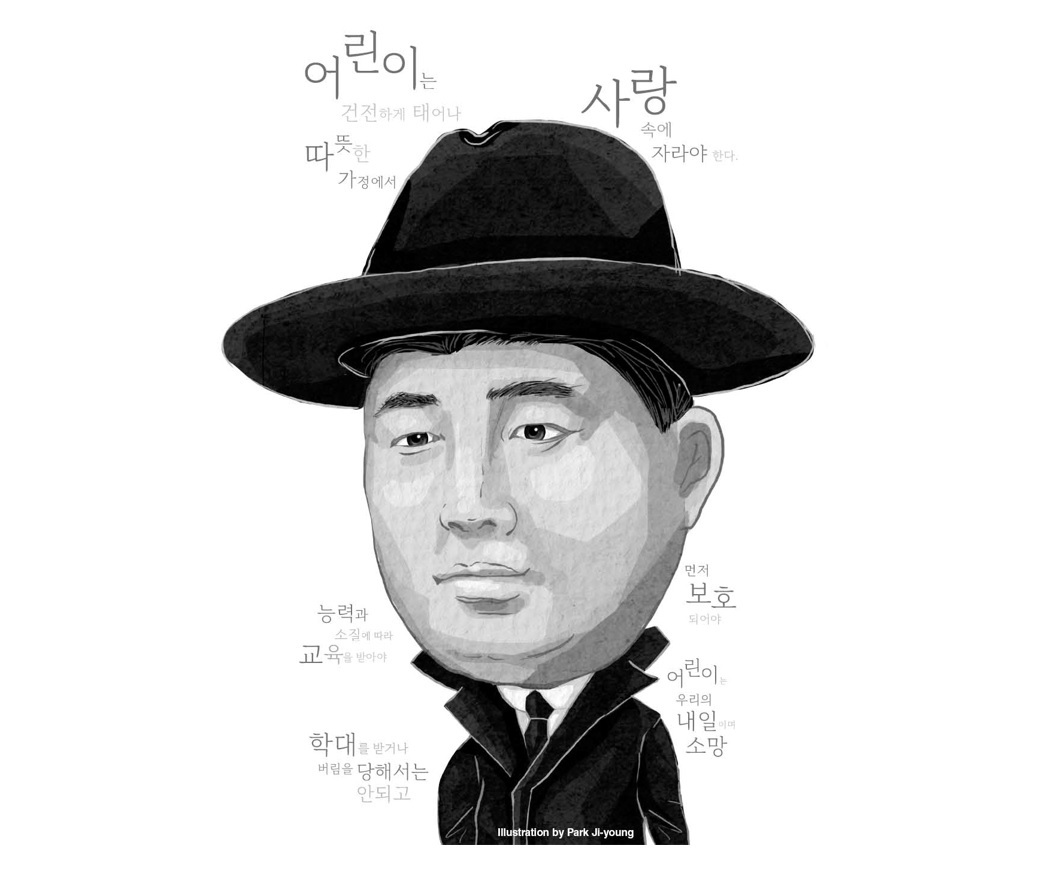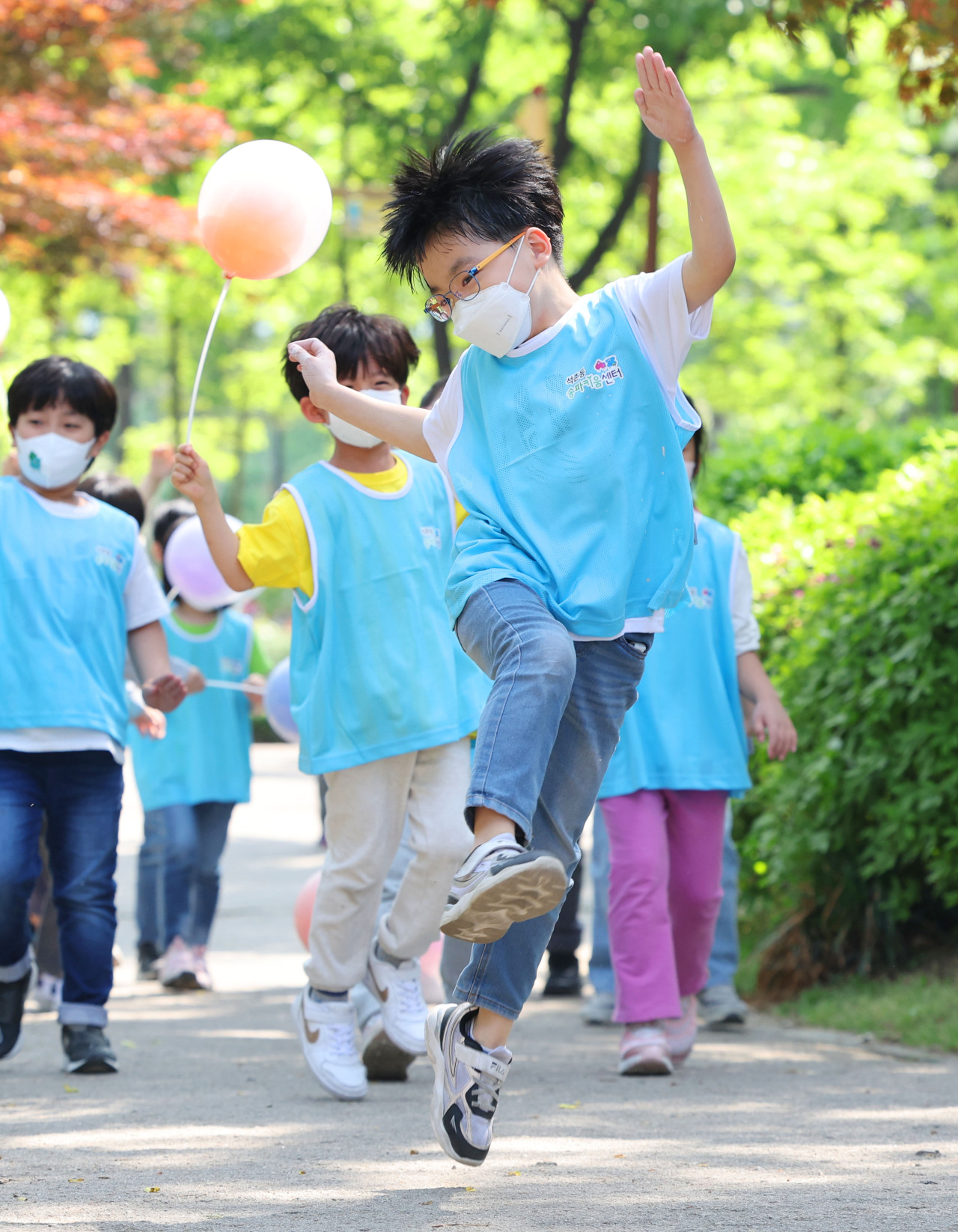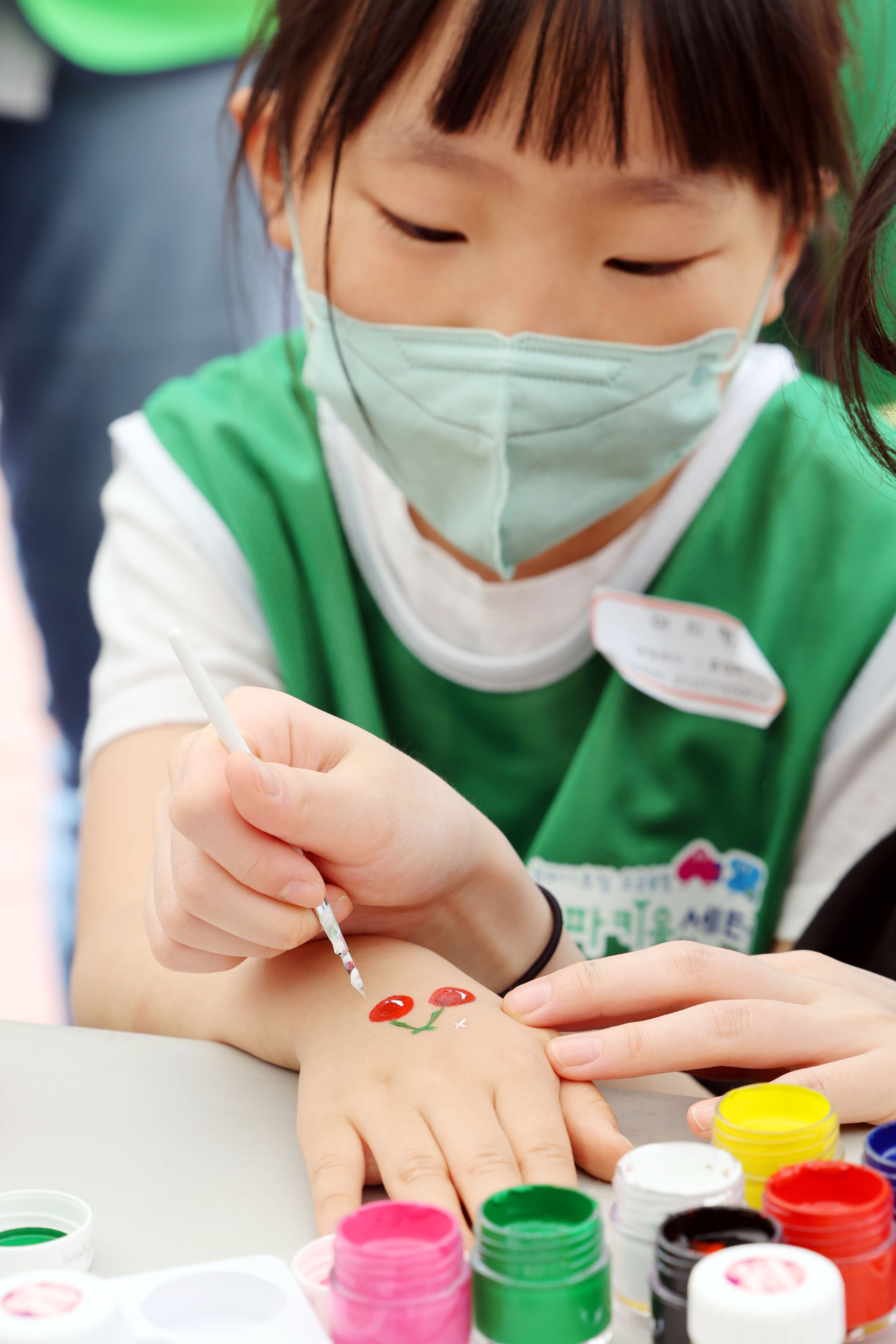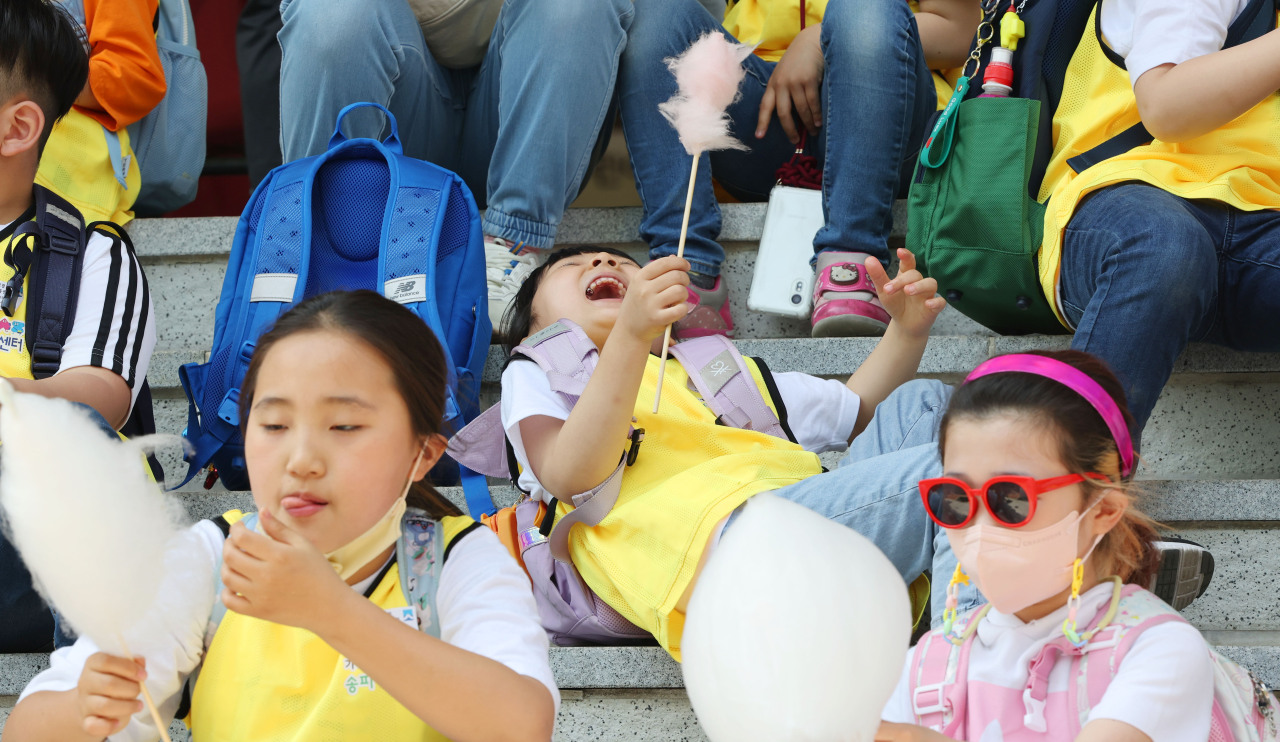Tracing the start of childhood in Korea
Five stories behind the father of Children’s Day in Korea and the beloved 100-year-old holiday for kids
By Yoon Min-sikPublished : May 4, 2022 - 17:52

There was no Korean word that matches the meaning of children at the time. Children were expected to provide labor or contribute to the family’s wellbeing in other ways such as marriage.
It was Bang Jeong-hwan and his colleagues at the group who challenged that.
Throughout his short life that spanned just over three decades, Bang threw himself into the children’s rights movement -- in part to build a stronger, independent nation. Korea at that time was under the colonial rule of Japan.
Here are a few facts you might not have known about Children’s Day and the man behind it all, Bang Jeong-hwan.
The first Children’s Day
A newspaper article on May 2, 1922, covered Bang’s ideals and mission, and gives a glimpse into the state of children’s rights back then.
In the article, Bang, originally a children’s book writer and an educator, offered seven recommendations for all adults: Do not look down on children, just see them as they are. Use respectful language and be gentle with them. Provide haircuts and baths on time. Allow them to have sufficient rest and exercise. Take them for walks or outings often. When reprimanding them, do not just vent your anger, but explain. Build playgrounds or facilities where children can have fun together.
A founder of children’s magazine “eorini, he is also credited for widely spreading the use of the word, which means children.
The word itself precedes Bang, with its roots tracing all the way back to a Joseon Dynasty-era educational book called “Gyeongminpyeon,” which advises people to “respect elders and have sympathy for the ‘eorini.’” While initially referring to young people in general, it is believed to have been redefined as to mean children in the early 20th century.
There is a bit of confusion as to when exactly Children’s Day started. Depending on who you ask, it was either May 1, 1922 -- when Bang and his colleagues first declared Children’s Day -- or May 1 of the following year, when the first nationwide celebration took place.
But as years passed by and the centennial anniversary approached, a consensus appears to have been formed on the 1923 theory. That means this year is the holiday’s 100th year.
The first Children’s Day was on May 1, which is Workers’ Day here and in many other countries. This was not a coincidence. It was a deliberate effort by campaigners to draw a parallel between the struggle for workers’ rights and those of children.
It was moved to May 5 in 1946 after Korea’s liberation from Japan. The change was to make the day a politically neutral, national celebration for children. It wasn’t until 1975 that May 5 became a public holiday across the nation.
Storyteller who dreamed of an independent nation
Bang was a hugely popular fairy tale narrator, having performed over 1,000 times in his short life. He utilized his storytelling skills as a lecturer of children’s literature and particularly as the founder of the monthly children’s magazine “Eorini (Children)” in March 1923.

The first issue of the magazine contained a message to all children, urging them to join local children’s associations and foster knowledge. “There, we can join hands, do anything, seek knowledge that is second to none, and grow in our own way,” the letter read.
Lee Jae-cheol, a pioneer of South Korean children’s literature who passed away in 2011, once said that the magazine’s purpose was to “awaken the national spirit of children who had nearly forgotten our language and stories, by providing stories and songs that are in our language.”
For Bang, children were the key to making Korea a stronger, more independent country. He participated in the March 1, 1919 independence movement against the Japanese, and for this reason, the magazine was heavily censored and Children’s Day celebrations were largely suppressed by Japan.
According to the book “Children’s Rights Activist, Sopa Bang Jeong-hwan,” articles in the magazine were deleted 34 times, its publication was stopped nine times, and entire copies of certain issues were confiscated by the authorities twice. This led to the chief editor Bang being summoned by the police and interrogated multiple times.
Later on, he was formally recognized by the South Korean government as a “person of distinguished service to independence.”

Big Bang
Korean children may know a thing or two about Bang as most children’s historical biography collections include him alongside such heroes like King Sejong or Adm. Yi Sun-sin.
Perhaps a lesser-known fact is that he was a big man not only in terms of his impact on the country, but also in terms of his waist.
The man, also known by his pen name “Sopa” (which is how “sofa” is pronounced in Korean), was famously overweight. His plump figure is apparent in most surviving photos of the man. While slim in his youth, his father-in-law Son Byong-hi -- one of the leaders of the March 1 Independence Movement -- was concerned about his skinny son-in-law. Son would feed Bang all sorts of delicacies whenever Bang would come to visit.
Bang was also known for his sweet tooth. He had a passion for sugar and “bingsu,” a sherbet-like Korean dessert made with shaved ice and sweet toppings. His love for sweets even made it into an essay in the April 1, 1931 edition of the magazine “Byeol-geon-gon.”
“Apologies for again mentioning someone in our company, but Mr. Bang Jeong-hwan is so in love with bingsu that he would usually make 50 servings disappear, in such a manner reminiscent of how a person would close the window after seeing a tiger. He also liked sugar so much that he would spend 10 jeon (Korean currency at the time) on a pack of sugar to put in a 15 jeon bowl of naengmyeon (cold noodles),” the essay read.
Unfortunately, the combination of a heavy workload and poor health aggravated by obesity and chain-smoking is believed to have contributed to Bang’s premature death four months before his 32nd birthday.
Bang’s dark side
While the public image of Bang Jeong-hwan is a loving and caring person for children, he had a dark side.
Perhaps the biggest moral flaw of his life is his accusation against Kim Myeong-sun, one of the first female novelists and poets in modern Korea, of sexual immorality. A Chosun Ilbo article on April 22 of 1927 shows that Bang and editors Shin Yeong-cheol and Cha Sang-chan of the Byeol-geon-gon were sued for libel by Kim over articles Bang wrote in the magazine.
In the series “Eun-Pa-ri,” in which Bang wrote satirical essays about the dark side of society, he wrote that Kim acts like a virgin even though she had five husbands, and ridiculed her by saying she was unable to decide on a surname for her child.
Despite Kim’s talents, she was unfairly stigmatized by her male contemporaries, for the fact that her mother was a gisaeng -- a Joseon-era female performer who belonged to the lowest social class -- and even going as far as to blame her for being raped while studying in Japan.
Most would agree that Bang would have no excuse for his public and unfair insult of a talented female contemporary, who was even a victim of a heinous crime, but some of the rumors surrounding him are somewhat exaggerated. One example was that Bang never cared for female education and that he deprived his own daughter of an opportunity to learn.
Bang just had two sons and no daughter. Although he did write an essay titled, “Even if I had a daughter, I wouldn’t send her to a school,” it was about the limitations of school programs for girls of the time, and contained extensive instructions about how to provide home schooling for girls.
It is true that Bang’s efforts centered mostly on boys, as were most educators of the time. Evidence points to Bang being concerned about female education, but within the limits of a man born during the conservative and misogynistic society of 19th century Joseon Dynasty.
Guessing game on May 5
Bang’s legacy has persisted long after his death. Children’s Day has become something like a midyear Christmas for Korean children.
Back in the ‘70s and ‘80s, Korean parents did not have much for their children. It was unthinkable for students to miss school for reasons other than serious illness. So when May 5 became a public holiday, meaning no work for parents and no school for kids, it made a big difference.
It soon became a tradition that parents took their kids for a treat, usually to a theme park.
The ensuing nationwide hustle and bustle results in the day being the worst possible day to visit a theme park.
So Children’s Day outings have become a guessing game for parents as to which destinations would be less crowded.

For instance, those who took their chances and visited the country’s largest theme park, Everland, on May 5 of 2015, turned out to be the winners of the game, as others shunned the venue expecting an enormous Children’s Day crowd.
Everland counted around 30,000 visitors on what could have been the busiest day of the year, which was less than twice its average number of daily visitors.
The following year, it was jam-packed with 50,000 people swarming all over the park.
Everland officials have said that the holiday is usually particularly busy when it falls right before or after the weekend. But a number of Korean parents still believe that a lucky guess could present them with a leisurely day at a theme park.
This year, there are two new additions to the country’s theme park lineup -- Legoland in Chuncheon, Gangwon Province, and Lotte World in Busan. How this will factor in Korean parents’ guessing game remains to be seen.
By Yoon Min-sik
(minsikyoon@heraldcorp.com)







![[KH Explains] Hyundai's full hybrid edge to pay off amid slow transition to pure EVs](http://res.heraldm.com/phpwas/restmb_idxmake.php?idx=644&simg=/content/image/2024/04/18/20240418050645_0.jpg&u=20240419100350)







![[From the Scene] Monks, Buddhists hail return of remains of Buddhas](http://res.heraldm.com/phpwas/restmb_idxmake.php?idx=652&simg=/content/image/2024/04/19/20240419050617_0.jpg&u=20240419175937)

![[KH Explains] Hyundai's full hybrid edge to pay off amid slow transition to pure EVs](http://res.heraldm.com/phpwas/restmb_idxmake.php?idx=652&simg=/content/image/2024/04/18/20240418050645_0.jpg&u=20240419100350)

![[Today’s K-pop] Illit drops debut single remix](http://res.heraldm.com/phpwas/restmb_idxmake.php?idx=642&simg=/content/image/2024/04/19/20240419050612_0.jpg&u=)